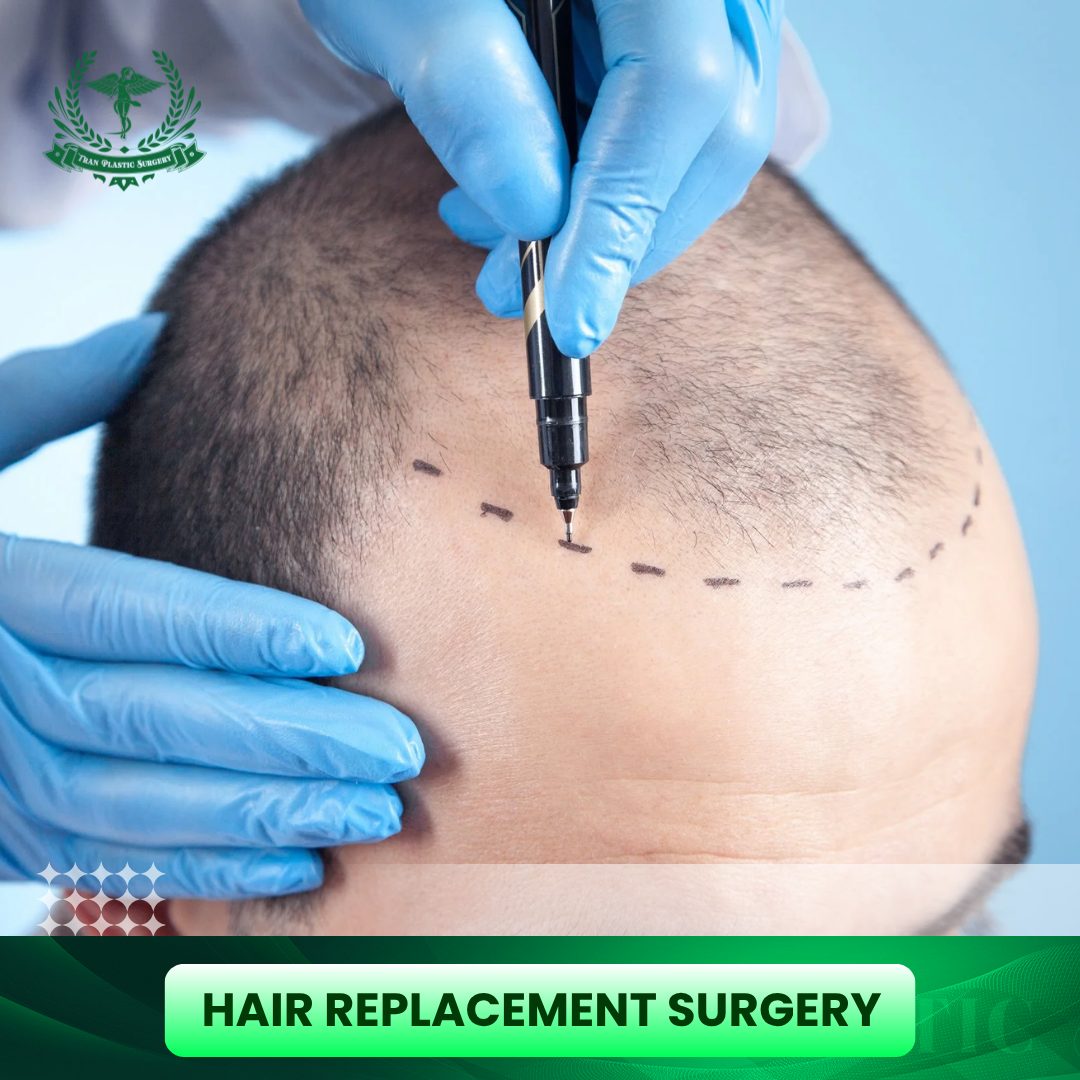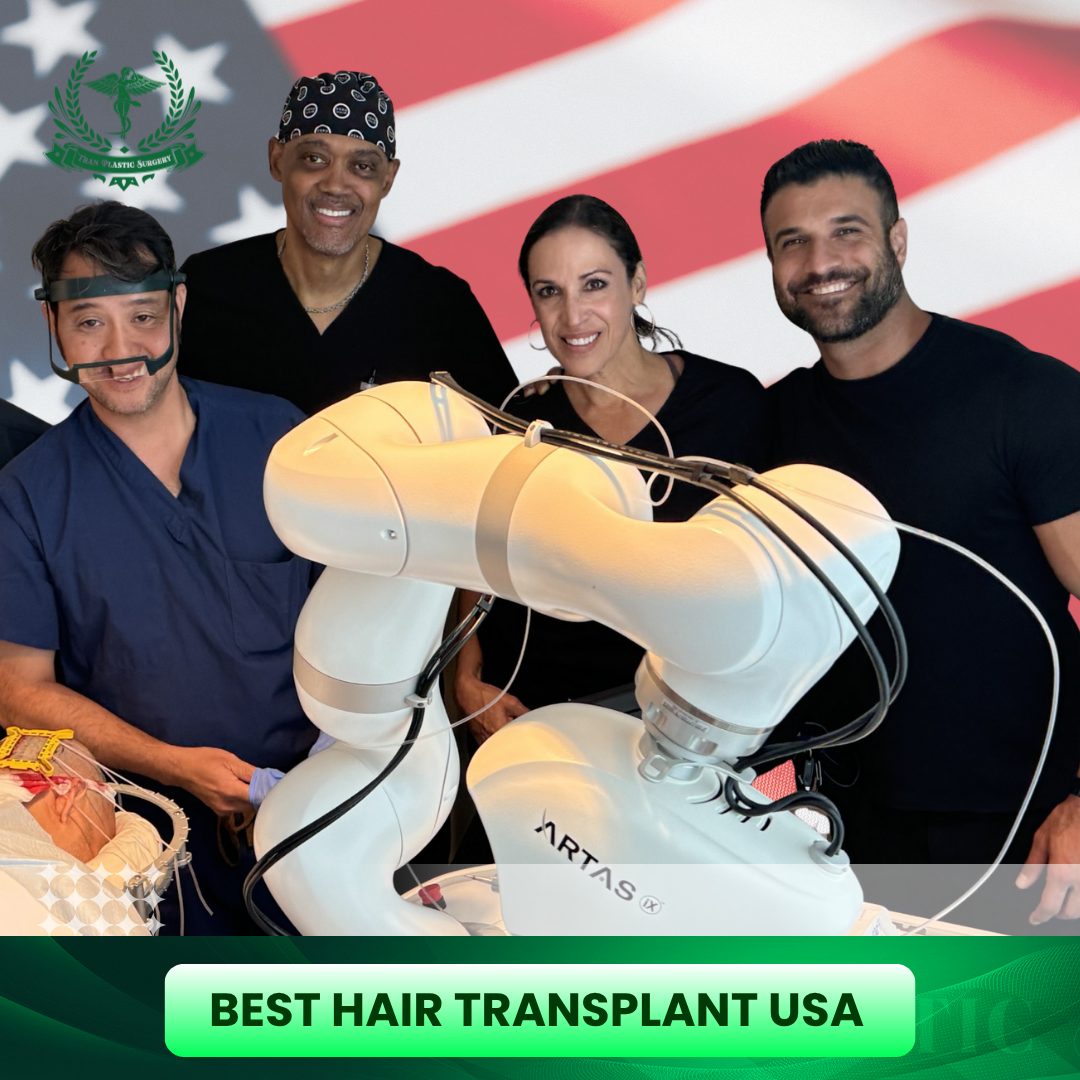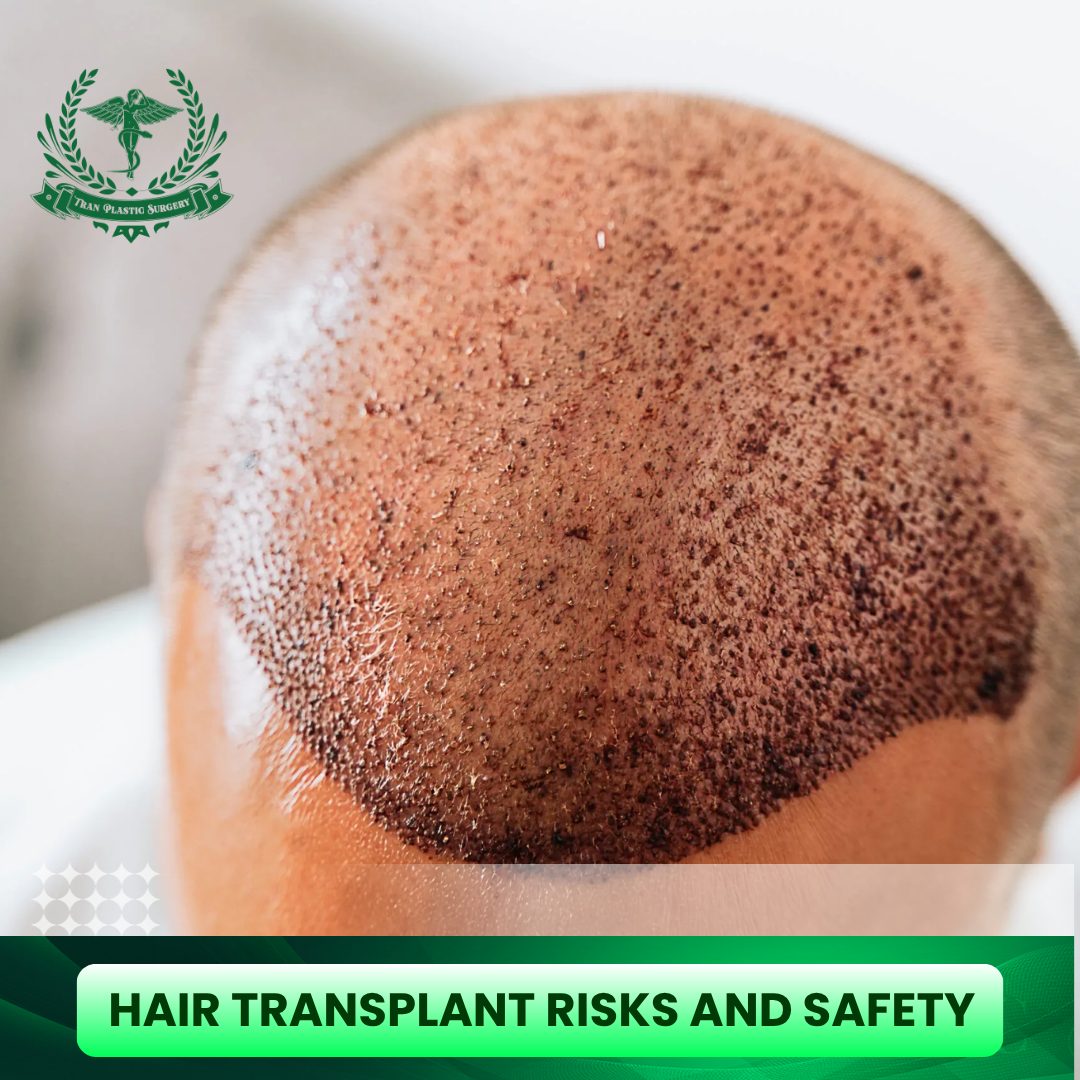Many patients hesitate to undergo hair restoration because of persistent hair transplant myths. Misinformation from outdated techniques, unverified online content, and misleading photos continues to create unnecessary fear and confusion.
Modern methods such as FUE (Follicular Unit Extraction) and FUT (Follicular Unit Transplantation) are precise, minimally invasive, and capable of producing completely natural results. When performed by a qualified surgeon, transplanted hair grows just like natural hair, blending seamlessly with existing strands.
This article clarifies the most common hair transplant misconceptions, explaining how today’s procedures differ from older techniques. Each section highlights a popular myth, presents the clinical reality, and provides guidance based on professional surgical standards.
Table of Contents
Toggle19 Hair Transplant Myths You May Not Realize
Myth #1: Hair Transplants Look Fake
The myth: “It’s easy to tell when someone has had a hair transplant.”
The truth: A properly executed transplant should be indistinguishable from natural hair growth. Skilled surgeons use individual follicular units to recreate the natural pattern of hair density and direction. The design of the hairline, combined with careful angle placement and density planning, prevents the unnatural “pluggy” look associated with early methods.
Transplanted follicles maintain the same characteristics as those in the donor area, ensuring that the new growth ages naturally over time. Results depend heavily on the surgeon’s technique, aesthetic judgment, and understanding of facial harmony.
Expert recommendation: Patients should review verified before-and-after photos, ask about the surgeon’s experience with FUE and FUT, and ensure that the clinic provides a personalized treatment plan based on hair type and pattern.

Myth #2: Hair Transplants Are Only for Men
The myth: “Hair transplant surgery is designed exclusively for men.”
The truth: Hair restoration procedures are effective for both men and women experiencing pattern hair loss or thinning. Female patients often suffer from diffuse thinning rather than complete bald areas, which requires a customized surgical plan. The same modern methods FUE (Follicular Unit Extraction) and FUT (Follicular Unit Transplantation) can be adapted to address female hair density concerns, frontal recession, or scarring alopecia.
Many women benefit from hair transplantation following childbirth, hormonal changes, or traction-related damage caused by tight hairstyles. Proper evaluation includes hormonal assessment, donor area analysis, and long-term management with medical therapies when necessary.
Expert recommendation: Hair transplant candidacy should be determined through a detailed consultation, not by gender. Both men and women can achieve natural, lasting results when surgery is performed by an experienced, board-certified specialist.
Myth #3: Hair Transplants Are Painful and Risky – Hair Transplant Myths
The myth: “Hair transplant surgery is extremely painful and comes with serious risks.”
The truth: Modern hair transplant procedures are performed under local anesthesia, which keeps patients comfortable throughout the process. Most describe the sensation as mild pressure or minimal discomfort, not pain. The recovery period is also straightforward, with only temporary redness or swelling that typically resolves within a few days.
Complications are rare when surgery is conducted by a qualified, board-certified surgeon in a sterile environment. Techniques like FUE (Follicular Unit Extraction) and FUT (Follicular Unit Transplantation) use microsurgical tools that minimize tissue trauma and speed up healing.
Expert recommendation: Choose a clinic with strict safety protocols, experienced surgical staff, and transparent pre- and post-operative care instructions. Proper planning and aftercare greatly reduce the chance of infection or scarring, confirming that most hair transplant myths about pain and risk are outdated.
Myth #4: Hair Transplants Don’t Last Forever
The myth: “Transplanted hair will eventually fall out just like the original hair.”
The truth: Transplanted follicles are typically taken from the donor area, where hair is genetically resistant to balding. Once these follicles are relocated to thinning regions, they retain their resistance and continue to grow for a lifetime. This is one of the key facts that disproves many common hair transplant myths.
However, surrounding native hair may still thin over time due to genetics or hormonal factors. For this reason, long-term maintenance such as medical therapy (finasteride, minoxidil, or PRP) is often recommended to protect overall density and enhance results.
Expert recommendation: A successful transplant requires both precise surgical technique and a long-term management plan. When properly executed, hair transplants provide permanent, natural growth that can last decades with appropriate care and follow-up.
Myth #5: Hair Transplants Work Immediately
The myth: “Hair transplant results appear right after surgery.”
The truth: While newly transplanted follicles begin healing immediately, visible growth takes time. During the first few weeks, transplanted hairs naturally shed a normal process called shock loss. New growth typically starts around three to four months after surgery, with noticeable improvement at six months and full results around twelve months.
This timeline reflects the body’s natural hair growth cycle, not surgical failure. Understanding this process is essential to avoid disappointment and to challenge misleading hair transplant myths that promise instant results.
Expert recommendation: Patients should follow all post-operative care instructions, maintain patience during the early stages, and attend scheduled follow-ups. Gradual growth ensures that the outcome looks natural and blends seamlessly with existing hair over time.
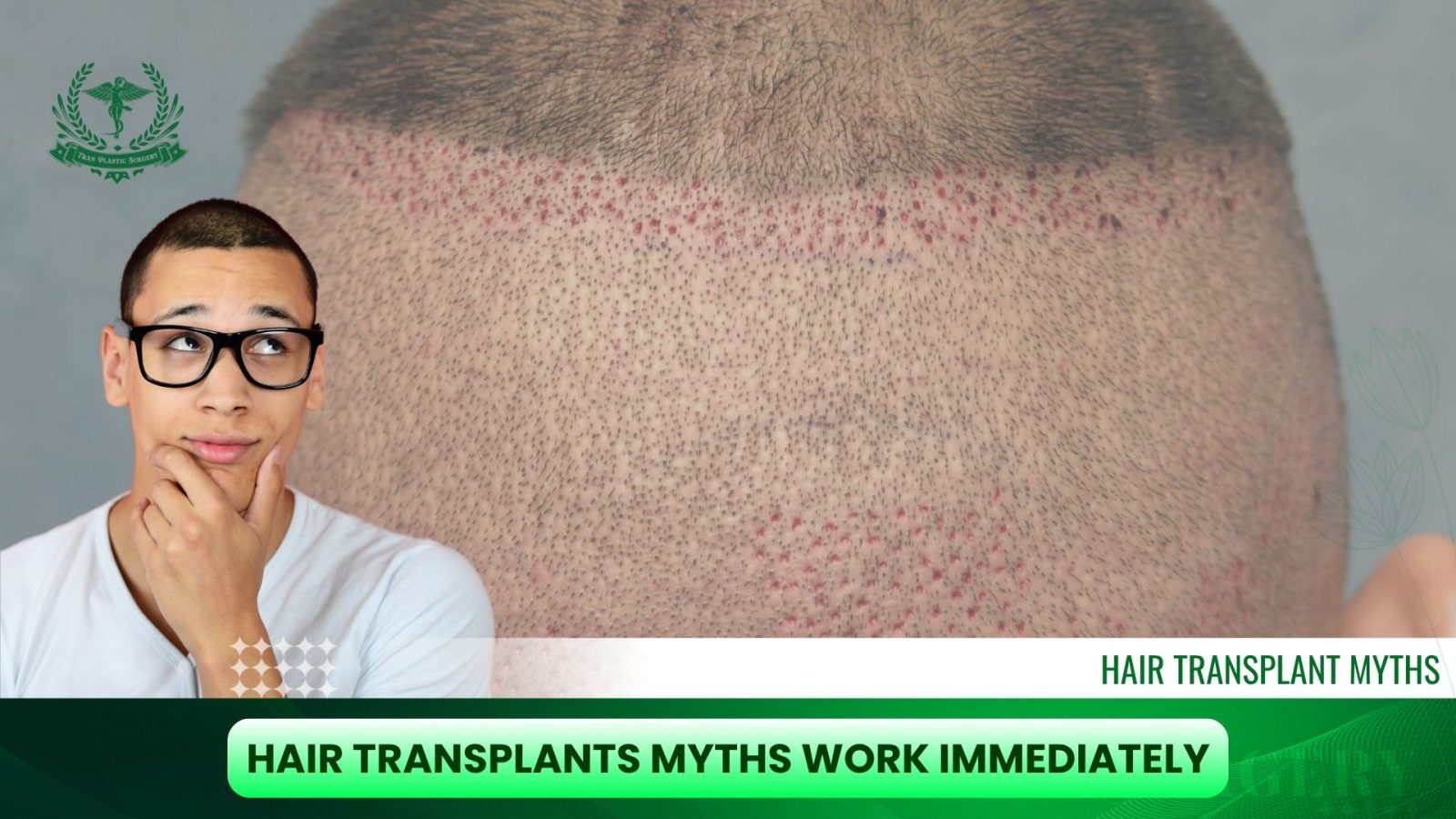
Myth #6: Hair Transplants Are Too Expensive (Hair Transplant Myths)
The myth: “Hair transplant surgery costs far more than most people can afford.”
The truth: While a hair transplant is an investment, it is often more cost-effective than ongoing temporary treatments such as hair systems, wigs, or repeated topical products. The price reflects the surgeon’s expertise, the number of grafts needed, and the precision required to achieve permanent, natural results.
Modern clinics offer different options, including FUE and FUT, allowing flexibility in pricing and outcomes. When performed correctly, a transplant provides lifelong value, eliminating the need for repeated expenses on short-term solutions.
Expert recommendation: Patients should evaluate value over price alone. Choosing a qualified, board-certified surgeon ensures safe techniques, ethical graft planning, and durable results. Financing options or staged sessions can make quality hair restoration accessible without compromising safety or aesthetics.
Myth #7: Hair Transplants Leave Large Scars
The myth: “Hair transplant surgery always leaves visible, permanent scars.”
The truth: Modern techniques have greatly minimized scarring. With FUE (Follicular Unit Extraction), follicles are removed individually using micro-punch tools, leaving only tiny, dot-like marks that fade over time and are barely noticeable, even with short hair. The FUT (strip) method involves a linear incision, but when performed skillfully and closed with precision, the scar is thin, flat, and easily concealed by surrounding hair.
Proper surgical technique, post-operative care, and scalp healing all play key roles in achieving minimal scarring. This improvement has helped debunk one of the most common hair transplant myths that prevent people from pursuing treatment.
Expert recommendation: Patients should confirm that their surgeon uses advanced FUE or refined FUT methods, adheres to sterile procedures, and provides clear aftercare instructions to support optimal healing and scar camouflage.
Myth #8: Hair Transplants Are Only for Older People
The myth: “Hair transplant surgery is meant for older men with advanced hair loss.”
The truth: Age is not the main factor in determining candidacy for a hair transplant. The key consideration is stability of hair loss and donor hair quality, not age alone. Many patients in their late 20s or 30s qualify for surgery once their pattern of thinning has stabilized and medical therapy has been optimized.
Performing a transplant too early before hair loss patterns are predictable can lead to uneven density later. However, once stabilization is achieved, younger patients can enjoy natural, lasting coverage and improved confidence for years to come.
This misconception remains one of the more persistent hair transplant myths, often discouraging suitable younger candidates from seeking professional evaluation.
Expert recommendation: Consultation should focus on the long-term plan rather than age. A personalized approach combining surgery and maintenance therapy ensures durable, natural-looking outcomes across all age groups.
Myth #9: Hair Transplants Require a Long Recovery Period – Hair Transplant Myths
The myth: “It takes months to recover after a hair transplant.”
The truth: Recovery after modern hair transplant surgery is typically short and manageable. Most patients return to work and normal activities within a few days. Minor redness, swelling, or tiny crusts around graft sites usually clear within 7–10 days.
Techniques such as FUE (Follicular Unit Extraction) use micro-sized incisions that heal quickly without stitches. Even FUT (Follicular Unit Transplantation) which involves a small donor incision has a straightforward healing process when performed correctly and cared for properly.
This is one of the most exaggerated hair transplant myths, often spread by outdated information from older surgical methods.
Expert recommendation: Following detailed post-operative instructions such as gentle scalp cleansing, avoiding direct sun, and refraining from strenuous exercise helps ensure smooth healing and optimal graft survival. Most patients resume routine life far sooner than expected.
Myth #10: Hair Transplants Look Obvious or Detectable
The myth: “Everyone can tell when someone has had a hair transplant.”
The truth: Modern hair transplant techniques produce natural, undetectable results when performed with proper planning and precision. The outdated “pluggy” look came from older methods that used large grafts and poor hairline design. Today’s procedures use single follicular units, replicating the natural growth pattern of real hair.
Surgeons focus on angle, direction, and density to ensure that transplanted follicles blend seamlessly with existing hair. The result is soft, natural coverage that moves and grows normally.
This misconception remains one of the most common hair transplant myths, but advancements in surgical artistry have made it completely outdated.
Expert recommendation: Patients should select clinics with documented results, consistent before-and-after photos, and proven experience in designing natural hairlines suited to individual facial structure and age.
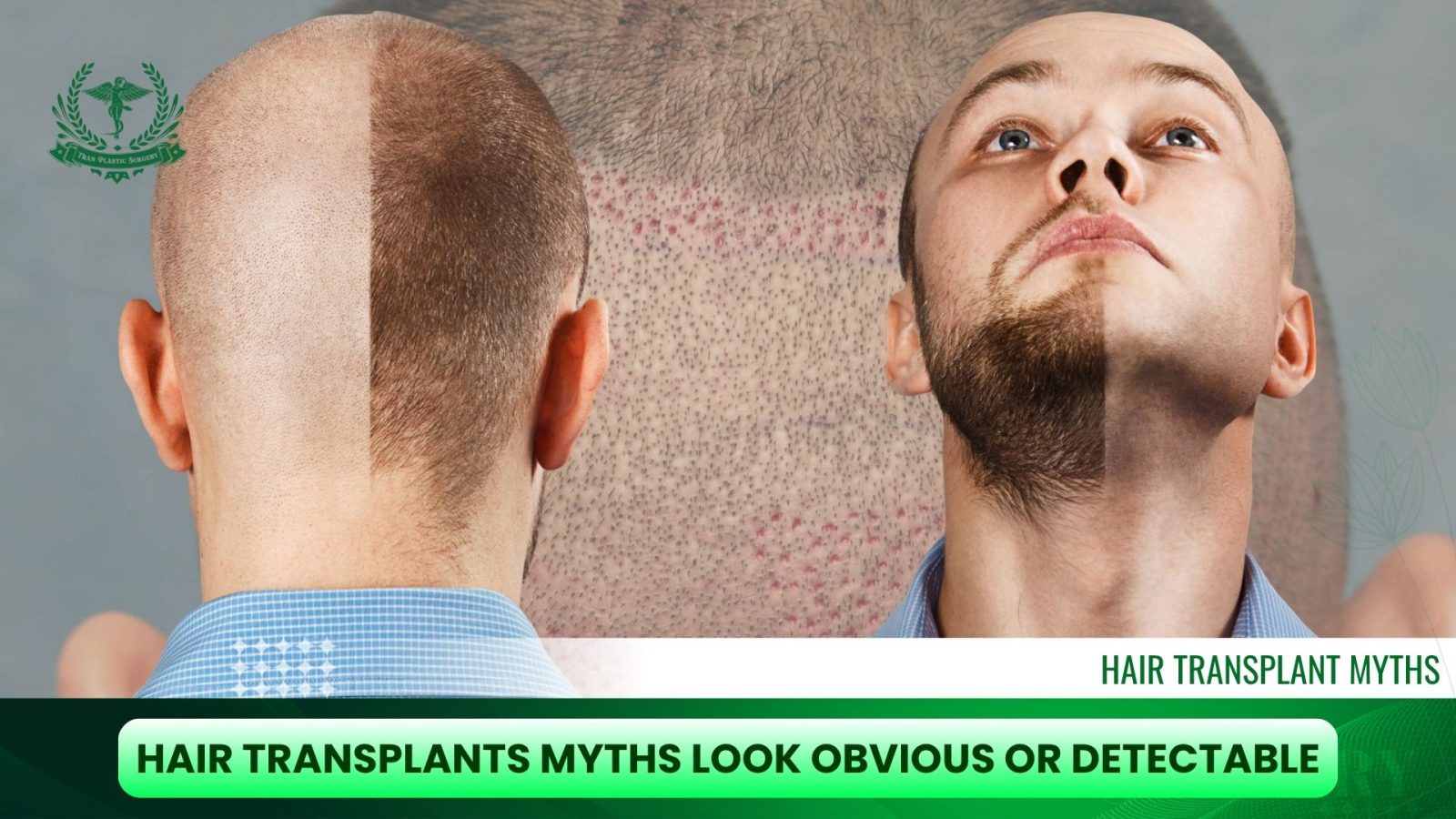
Myth #11: Hair Transplants Stop Future Hair Loss
The myth: “Once a hair transplant is done, hair loss completely stops.”
The truth: A hair transplant restores density in thinning areas, but it does not prevent future loss of native hair. Transplanted follicles are genetically resistant to balding, yet surrounding non-transplanted hairs can still thin over time due to hormonal or genetic factors.
To maintain consistent coverage, surgeons often recommend a combined approach that includes medical treatments such as finasteride, minoxidil, or platelet-rich plasma (PRP) therapy. These treatments help stabilize existing hair and enhance overall results.
Believing that surgery alone will stop all hair loss is one of the most misleading hair transplant myths. Long-term success depends on both the surgical plan and ongoing maintenance.
Expert recommendation: Patients should work with a qualified specialist to develop a comprehensive treatment plan that includes medical management and regular follow-up to preserve natural-looking results for years.
Myth #12: Hair Transplants Damage Existing Hair – Hair Transplant Myths
The myth: “Transplant surgery harms the natural hair that’s still growing.”
The truth: When performed by an experienced, board-certified surgeon, hair transplant procedures are carefully designed to protect surrounding native hair. Modern techniques such as FUE (Follicular Unit Extraction) and refined FUT (Follicular Unit Transplantation) use microsurgical tools that allow precise placement of grafts without disrupting nearby follicles.
In some cases, temporary shedding known as shock loss may occur in the transplanted or adjacent hair. This is a normal part of the healing process and typically reverses within a few months as new growth begins.
This misconception remains one of the more persistent hair transplant myths, but proper technique, spacing, and post-operative care ensure that existing hair remains healthy and intact.
Expert recommendation: Patients should select a qualified surgeon with extensive experience in dense packing and graft placement. Gentle surgical handling and individualized planning minimize trauma and preserve natural density.
Myth #13: Hair Transplants Are Only for the Scalp
The myth: “Hair transplant procedures can only restore hair on the scalp.”
The truth: Modern hair transplant techniques are versatile and can be used to restore hair in several areas beyond the scalp. Surgeons routinely perform eyebrow transplants, beard and mustache restoration, and scar camouflage using the same follicular unit extraction (FUE) method. These procedures require precise angle and density control to match the natural growth pattern of facial or body hair.
This misunderstanding remains one of the common hair transplant myths, often limiting patients who could benefit from smaller, targeted treatments. With refined tools and advanced microsurgical techniques, natural results can be achieved in multiple regions where hair loss occurs.
Expert recommendation: Patients seeking restoration outside the scalp should consult a qualified specialist experienced in facial and body hair transplants. Proper donor selection and meticulous placement are key to achieving realistic texture and direction.
Myth #14: Hair Transplants Are Not Suitable for Curly or Ethnic Hair
The myth: “People with curly or ethnic hair cannot undergo a successful hair transplant.”
The truth: Curly and ethnic hair types, including Afro-textured and wavy hair, respond very well to modern hair transplant techniques. The natural curl provides excellent coverage and density, often requiring fewer grafts to achieve a fuller appearance. However, these cases require advanced skill and experience because the follicle’s curved shape demands precise handling during extraction and implantation.
Surgeons trained in FUE (Follicular Unit Extraction) for curly hair use specialized tools to prevent graft damage and maintain natural curl direction. This adaptation has helped dispel one of the longest-standing hair transplant myths related to ethnic hair restoration.
Expert recommendation: Patients with textured or ethnic hair should seek clinics with proven experience in diverse hair types. Customized planning and proper instrumentation are key to achieving natural, even results that match the patient’s hairline and texture.

Myth #15: Hair Transplants Give Instant Full Density – Hair Transplant Myths
The myth: “After surgery, the scalp immediately looks full and thick.”
The truth: Achieving full density after a hair transplant takes time and depends on individual healing and hair growth cycles. Following the procedure, transplanted hairs typically shed within a few weeks a normal phase called shock loss before new growth begins around the third or fourth month. True thickness develops gradually, with optimal density visible between 9 to 12 months.
This misunderstanding is one of the most common hair transplant myths, often fueled by unrealistic marketing claims or edited “after” photos. A skilled surgeon plans graft placement strategically to achieve balanced coverage that appears fuller over time, not overnight.
Expert recommendation: Patience is essential. Consistent follow-up care, nutritional support, and proper scalp hygiene enhance follicle growth and long-term density. Understanding the natural growth timeline helps set realistic expectations and ensures lasting satisfaction.
Myth #16: Hair Transplants Are Only About Vanity
The myth: “People choose hair transplants purely for cosmetic vanity.”
The truth: While aesthetics play a role, hair restoration often has a deeper emotional and psychological impact. Hair loss can affect self-esteem, confidence, and social interactions. For many patients, regaining a natural appearance restores not only hair but also a sense of identity and well-being.
Clinical studies have shown that successful hair restoration can significantly improve mental health and quality of life. The decision to undergo surgery is often about confidence and self-image rather than superficial appearance. Dismissing it as vanity oversimplifies the real emotional benefits of hair restoration.
This belief remains one of the most unfair hair transplant myths, undermining the positive influence modern procedures can have on personal and professional life.
Expert recommendation: Patients should view hair restoration as part of overall self-care. When performed by a qualified specialist, it enhances natural features and contributes to emotional wellness not vanity.
Myth #17: Are Hair Transplants Still Elitist?
The myth: “Hair restoration surgery is a luxury procedure affordable only to the rich.”
The truth: Modern hair transplant procedures are far more accessible than many believe. Advances in technique, efficiency, and global medical standards have reduced overall treatment costs while improving quality. Clinics now offer a range of FUE and FUT options, allowing customization based on each patient’s goals, graft count, and budget.
When compared to lifelong spending on topical products, wigs, or temporary hair systems, a transplant often provides a long-term, cost-effective solution. This disproves one of the oldest hair transplant myths, showing that lasting results do not require extreme wealth only informed planning and qualified care.
Expert recommendation: Patients should focus on value and credibility, not just price. Reputable clinics provide transparent pricing, financing options, and detailed consultations that make professional hair restoration achievable for a wide range of budgets.
Myth #18: Hair Transplants Use Only Your Own Hair – Hair Transplant Myths
The myth: “Hair used in transplants comes from other people or random parts of the body.”
The truth: In reality, hair transplants use the patient’s own hair, typically taken from the donor area the back or sides of the scalp, where follicles are genetically resistant to hair loss. These hairs are transplanted to thinning or bald areas, ensuring natural growth and complete biological compatibility.
Transplanting someone else’s hair is not possible, as the body would reject it due to immune incompatibility. In select cases, body hair (from the chest or beard) may be used, but only when scalp donor supply is limited, and even then, it’s still the patient’s own hair, not another person’s.
This misunderstanding is one of the most misleading hair transplant myths, often spread by misinformation online.
Expert recommendation: Always confirm that the clinic uses autologous grafts the patient’s own follicles and follows proper donor-site management for optimal, permanent results.
Myth #19: Transplanted Hair Needs Meds to Thrive
The myth: “Transplanted hair won’t grow unless you take medication.”
The truth: Once transplanted, hair follicles grow naturally without the need for medication. Because they are taken from areas genetically resistant to balding, these follicles retain their strength and continue growing permanently in their new location. The growth process follows the body’s natural hair cycle shedding first, then gradually regrowing within a few months.
However, medications such as finasteride, minoxidil, or PRP therapy can help preserve the patient’s existing non-transplanted hair and improve overall density. These treatments are supportive but not required for transplanted follicles to grow successfully.
This is one of the more misunderstood hair transplant myths, often causing confusion between post-surgical maintenance and actual graft survival.
Expert recommendation: Patients should follow their surgeon’s post-operative plan and use medications only when prescribed to stabilize natural hair loss, not to activate transplanted follicles.
Final Thoughts and Professional Advice about Hair Transplant Myths
Understanding the truth behind common hair transplant myths helps patients make confident, informed decisions about their treatment. Modern techniques such as FUE (Follicular Unit Extraction) and FUT (Follicular Unit Transplantation) have transformed hair restoration into a safe, predictable, and natural-looking procedure.
Professional evaluation is essential. Every patient’s condition is unique, requiring individualized planning, medical management, and realistic expectations. Selecting a board-certified surgeon with proven experience ensures precision, safety, and long-term satisfaction.
Hair restoration is not a luxury, it is a medical solution designed to restore self-confidence and improve quality of life. Clear education, honest communication, and evidence-based care remain the foundation of successful outcomes.
Dr. Tuan Tran, Tran Plastic Surgery (CA, USA) emphasizes that modern hair restoration combines science, artistry, and patient trust. Accurate information is the key to achieving natural, lasting results.


